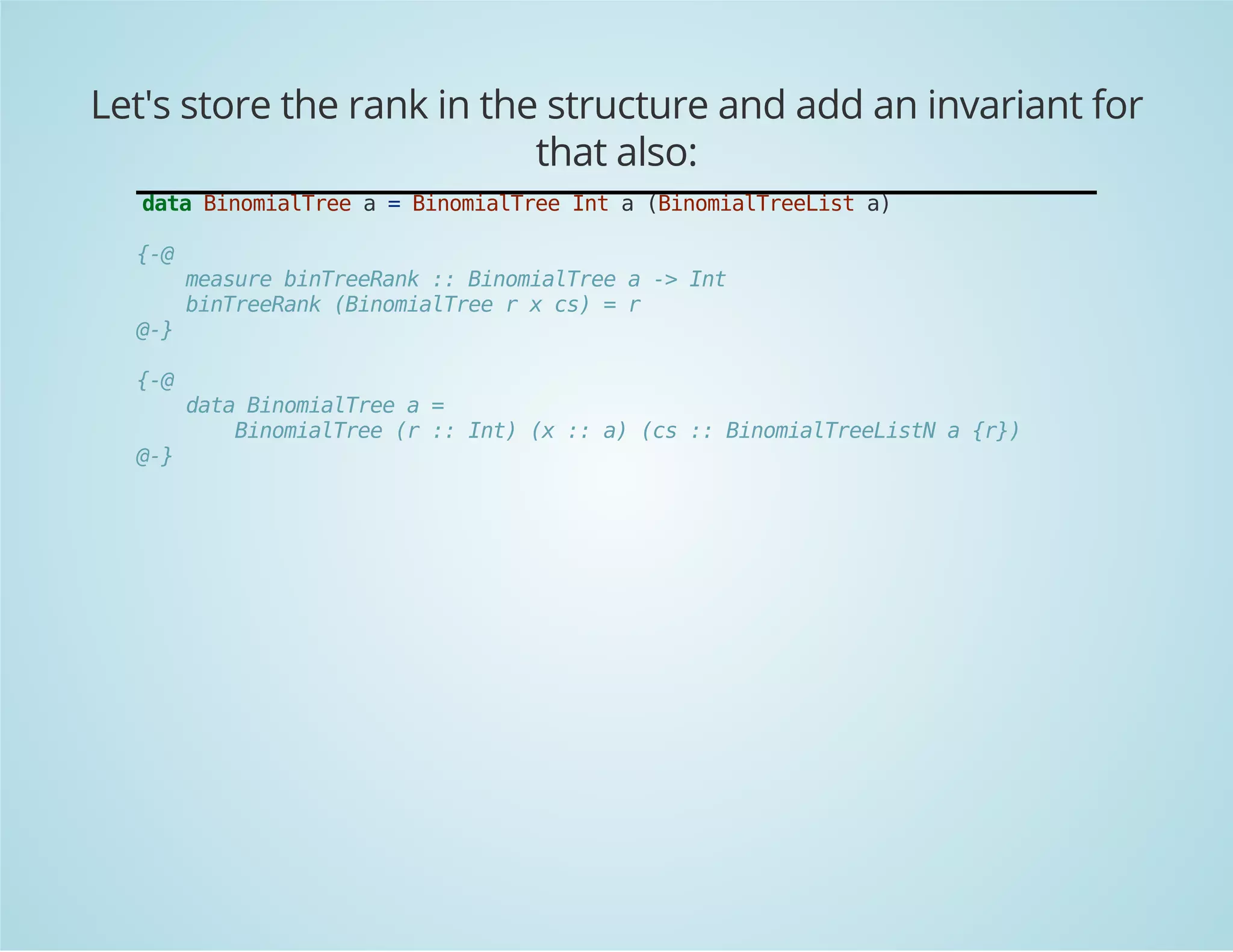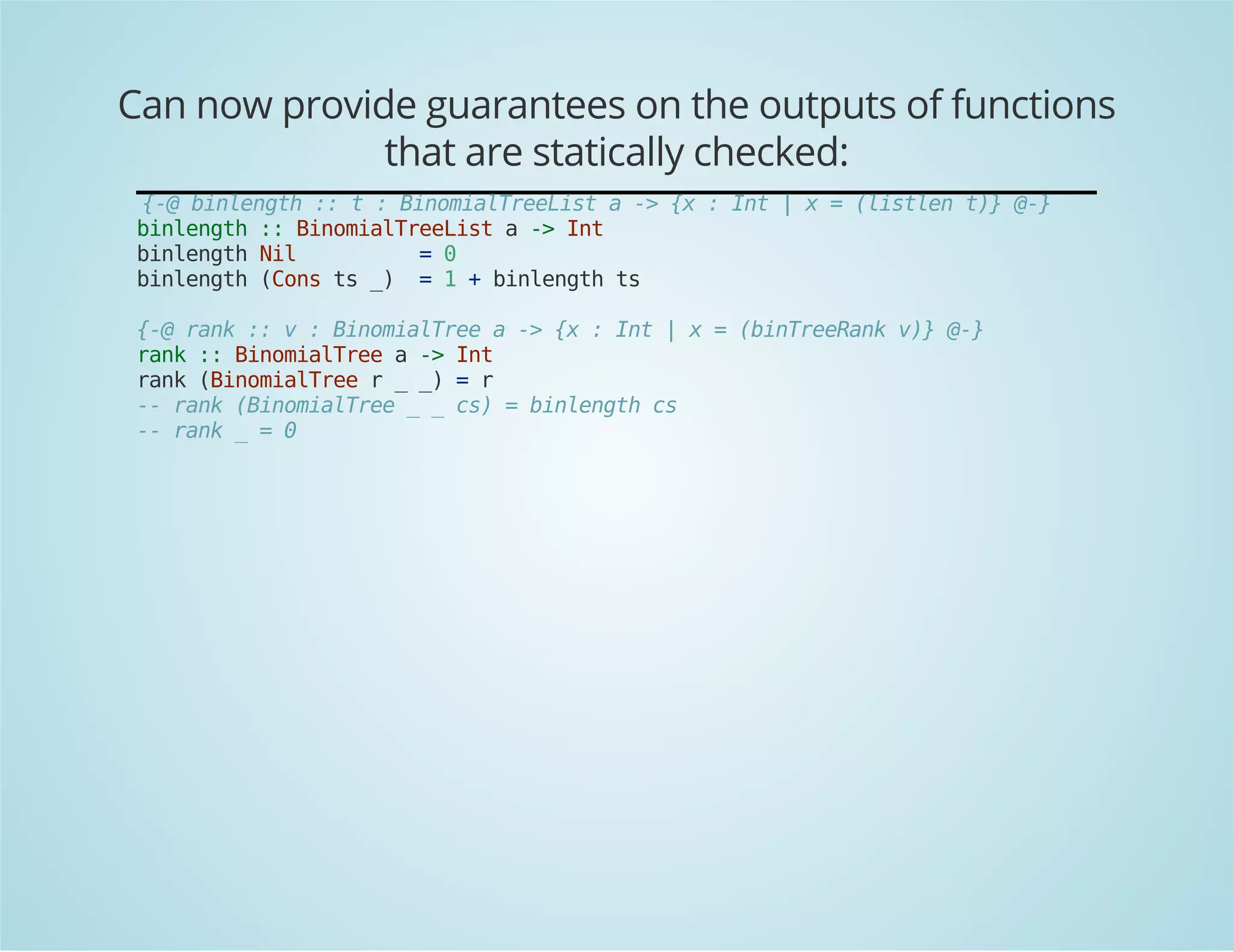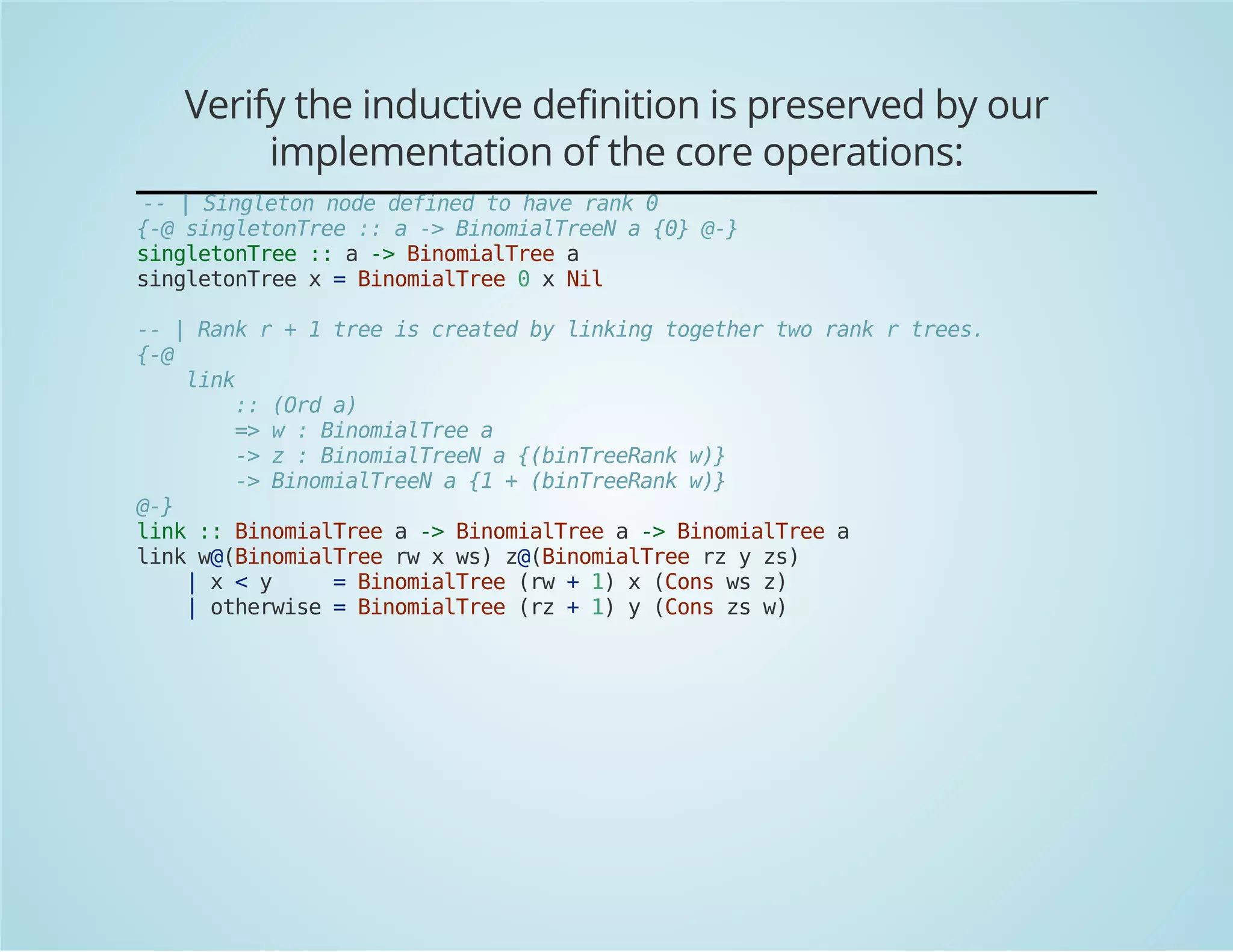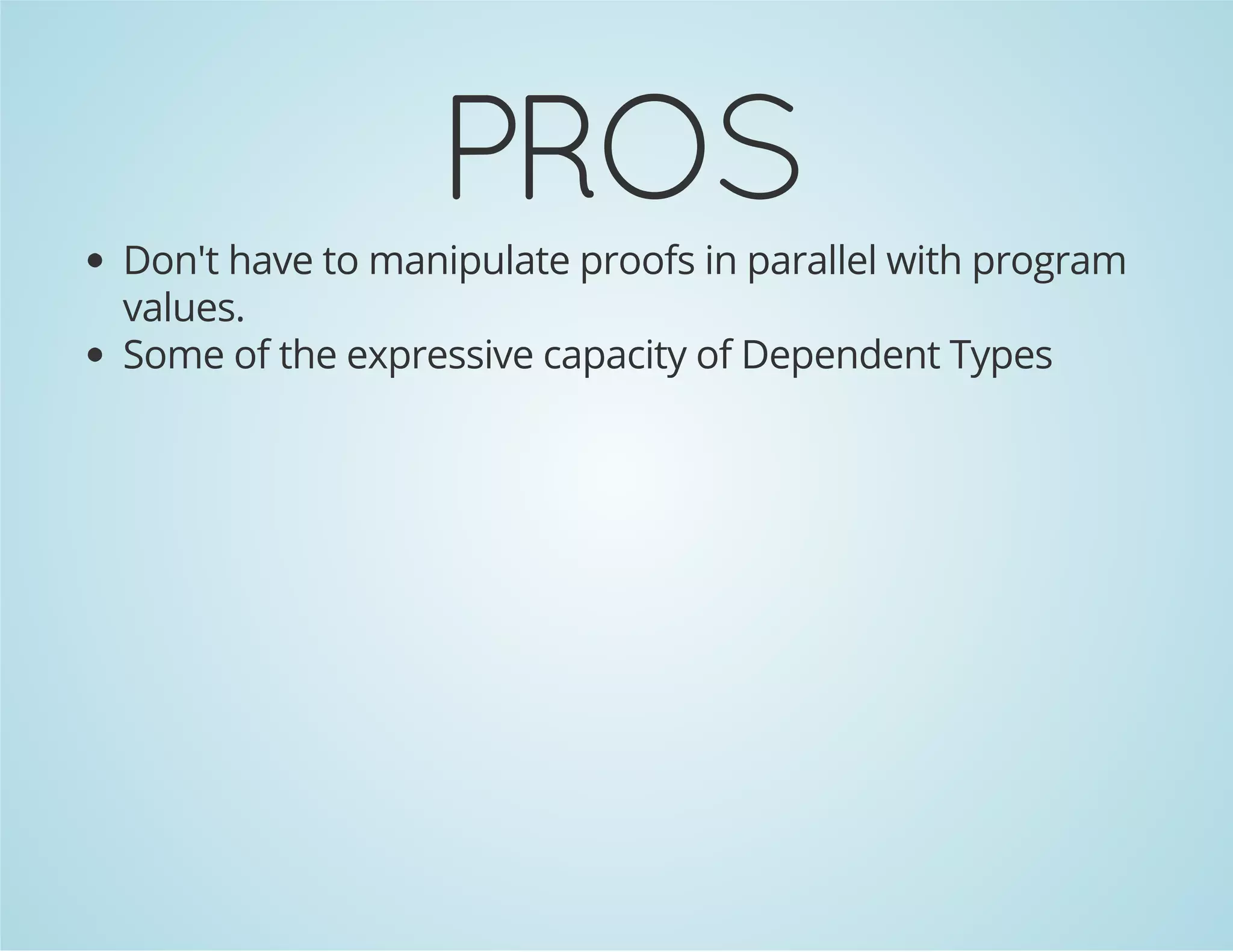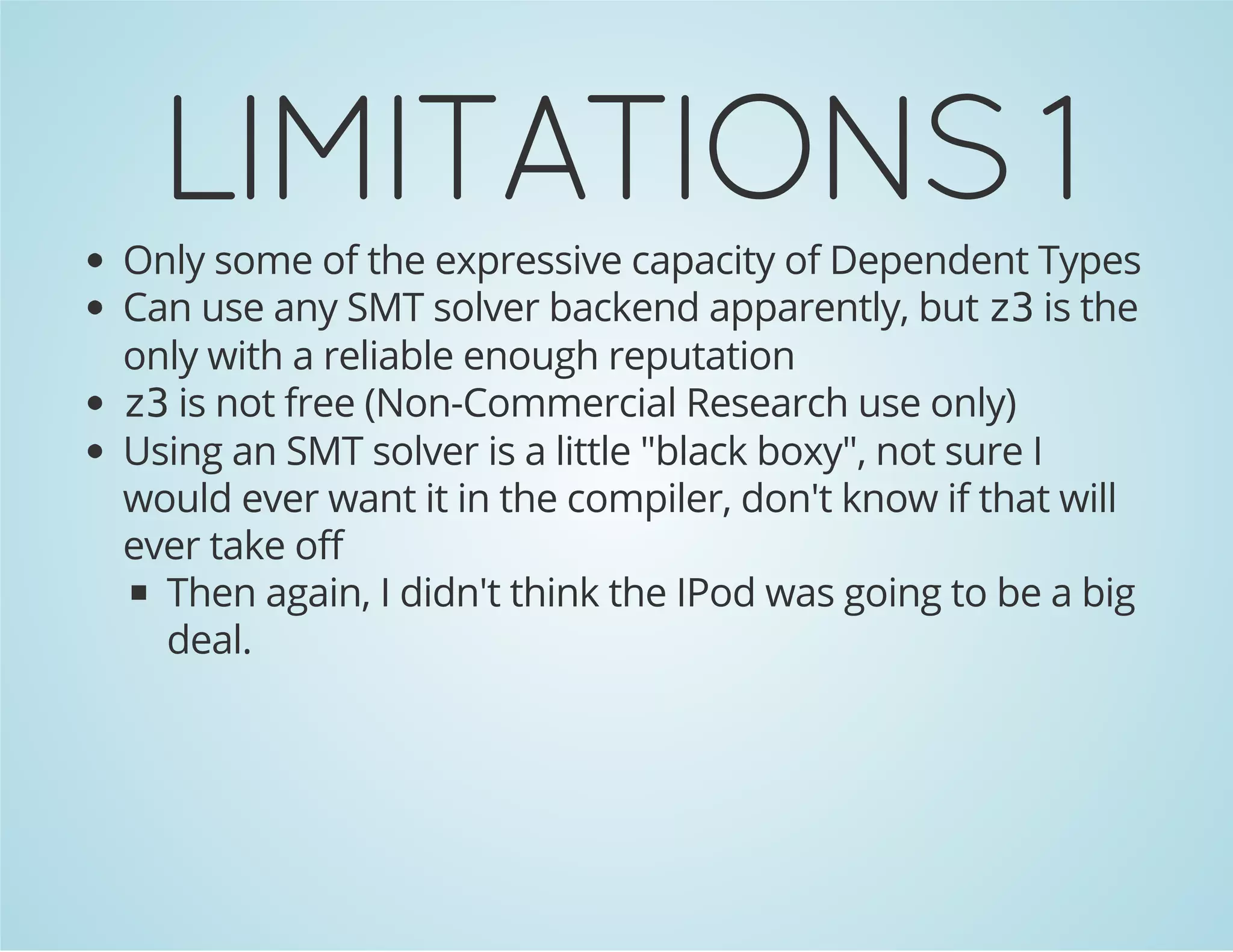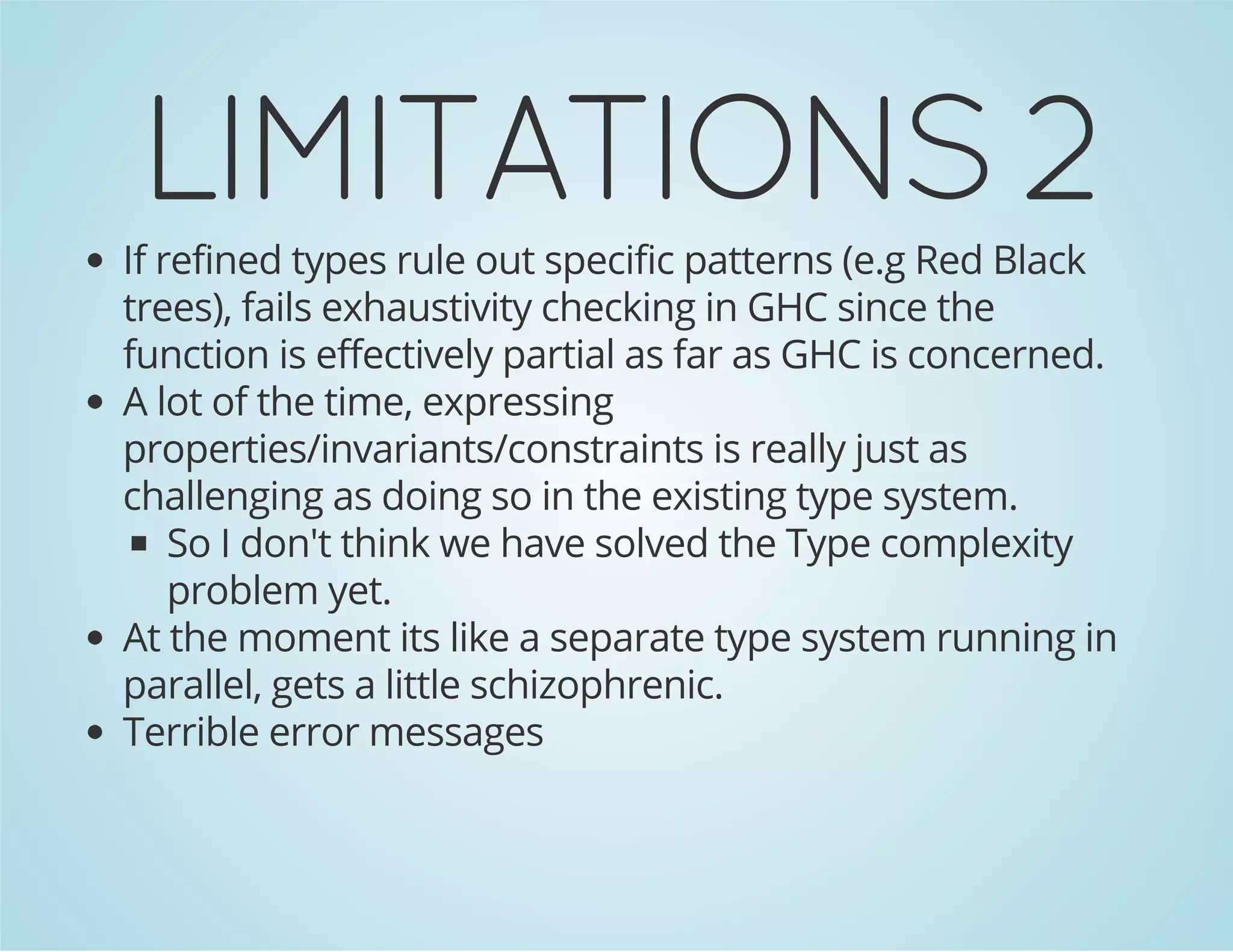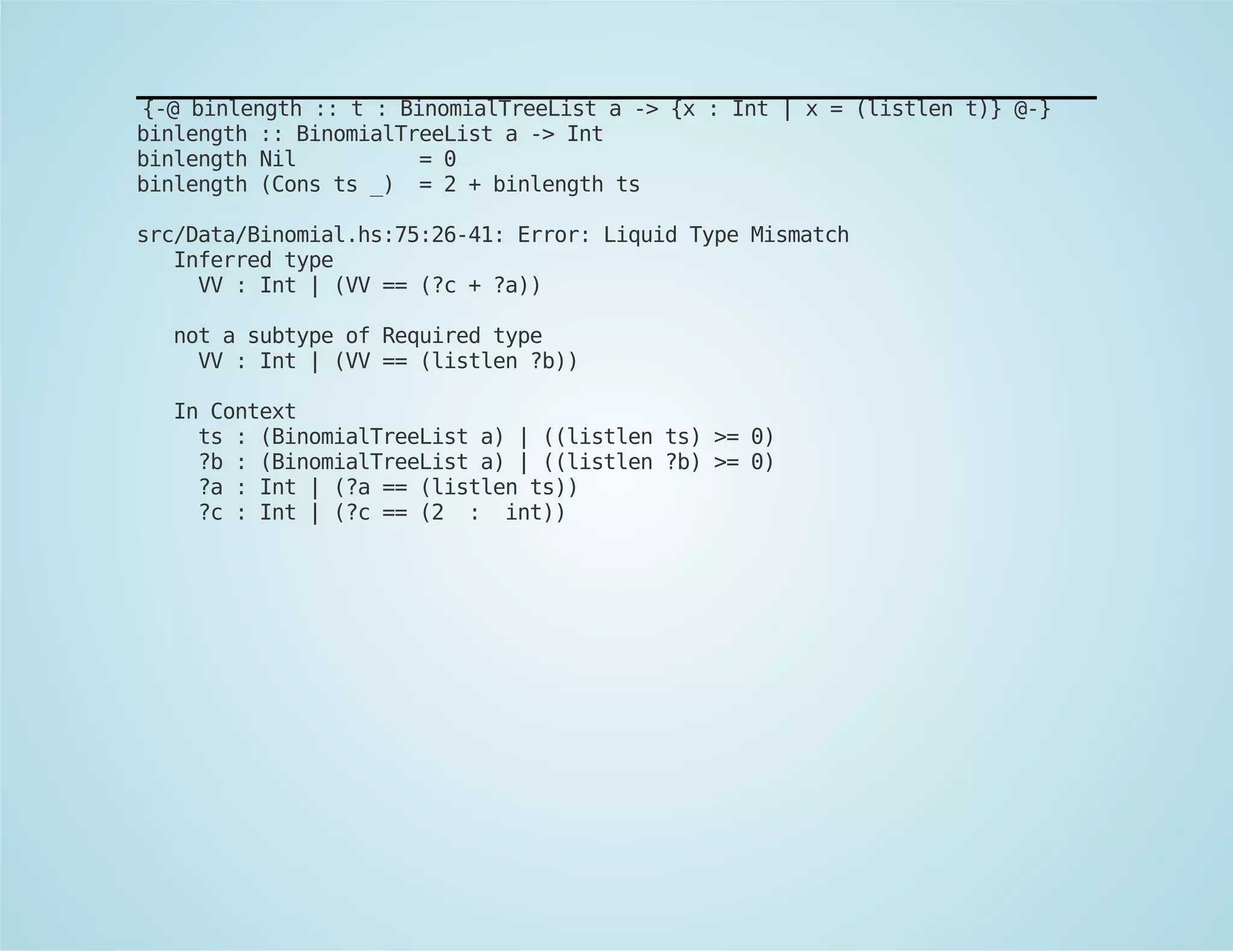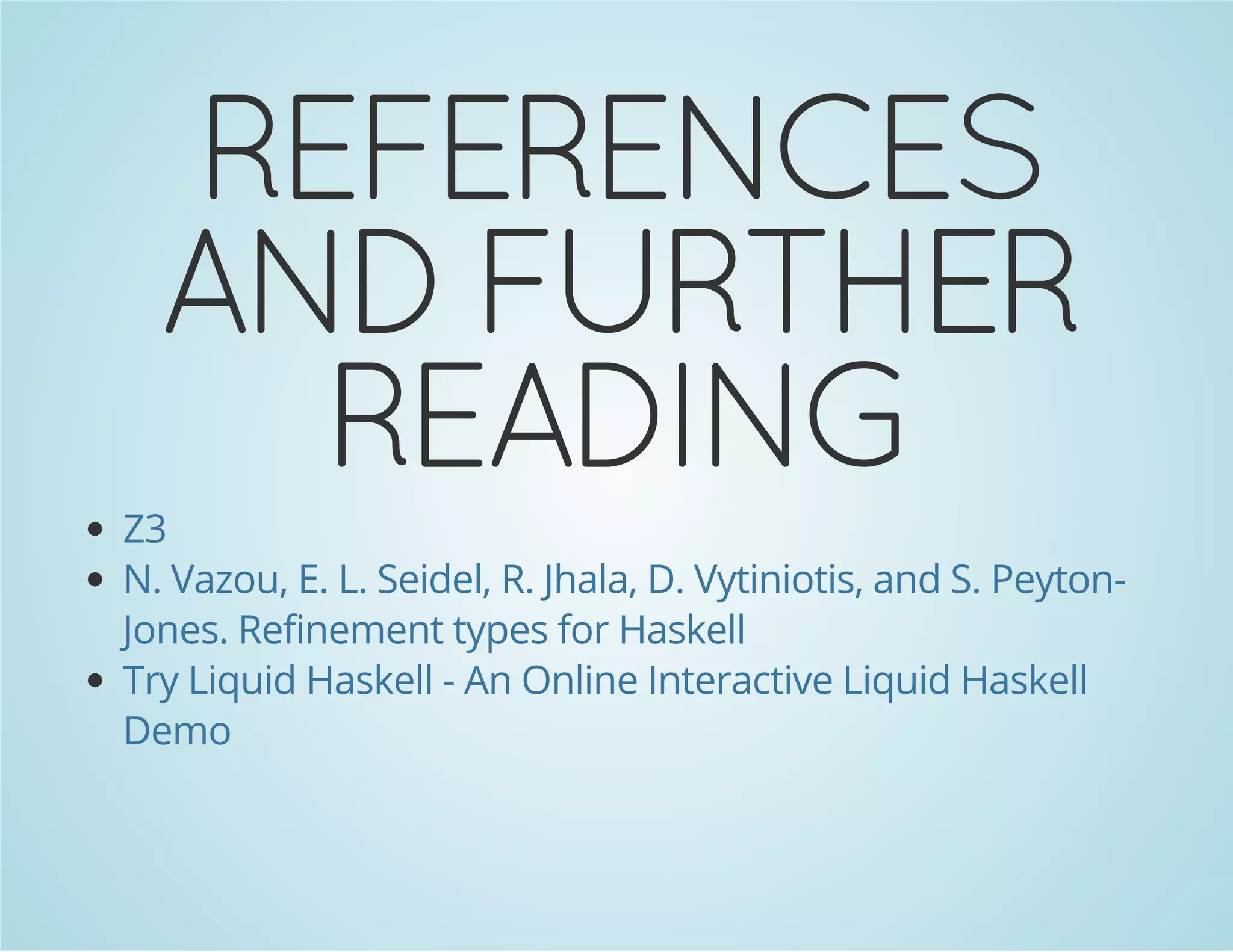This document discusses refined types in Haskell, focusing on type safety and invariant preservation, especially in data structures such as non-empty lists and red-black trees. It outlines the transition from using standard functions to leveraging refined types to encode invariants, thereby reducing bugs in operations. The text also highlights the limitations of using refined types, including challenges with property expressiveness and error handling.
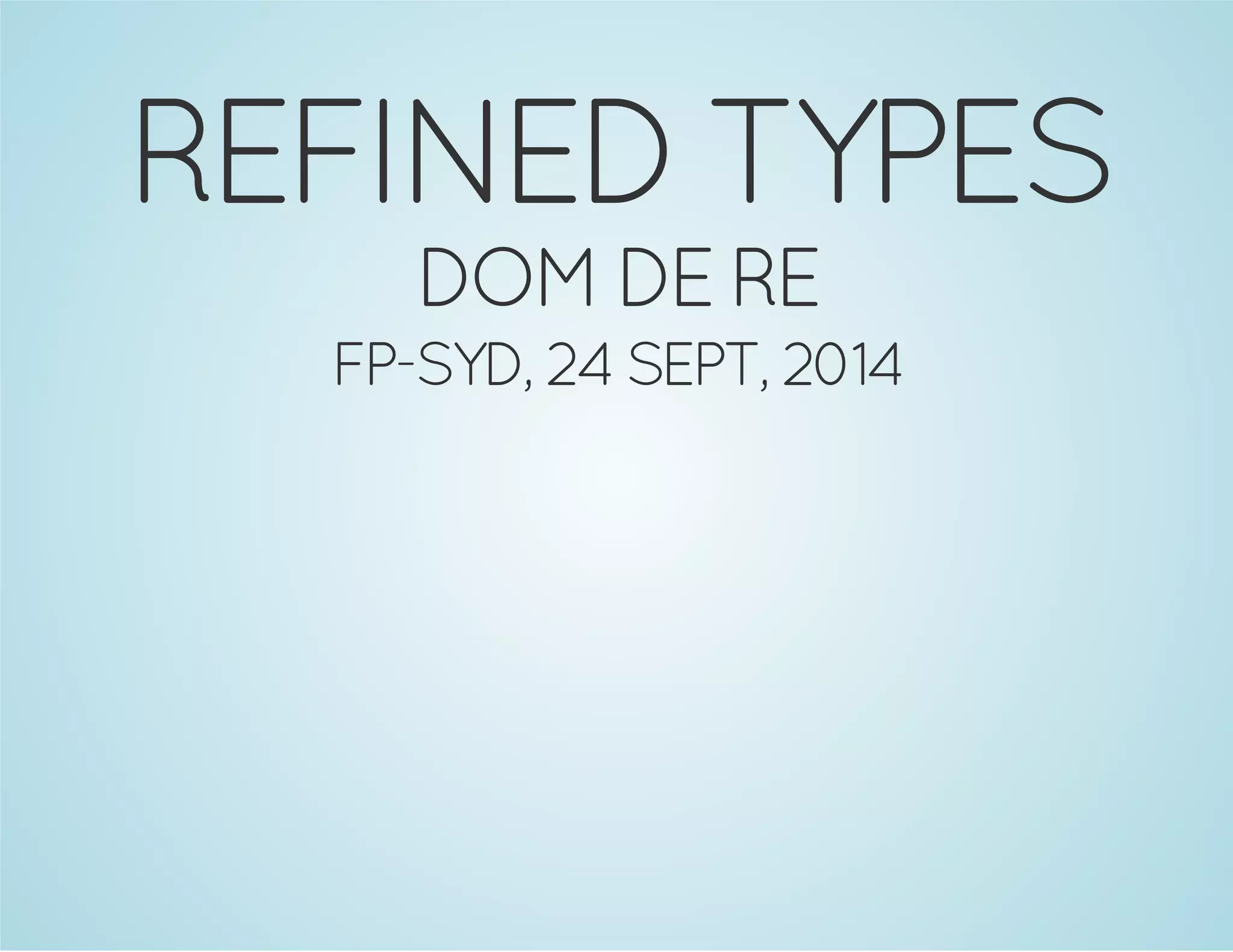
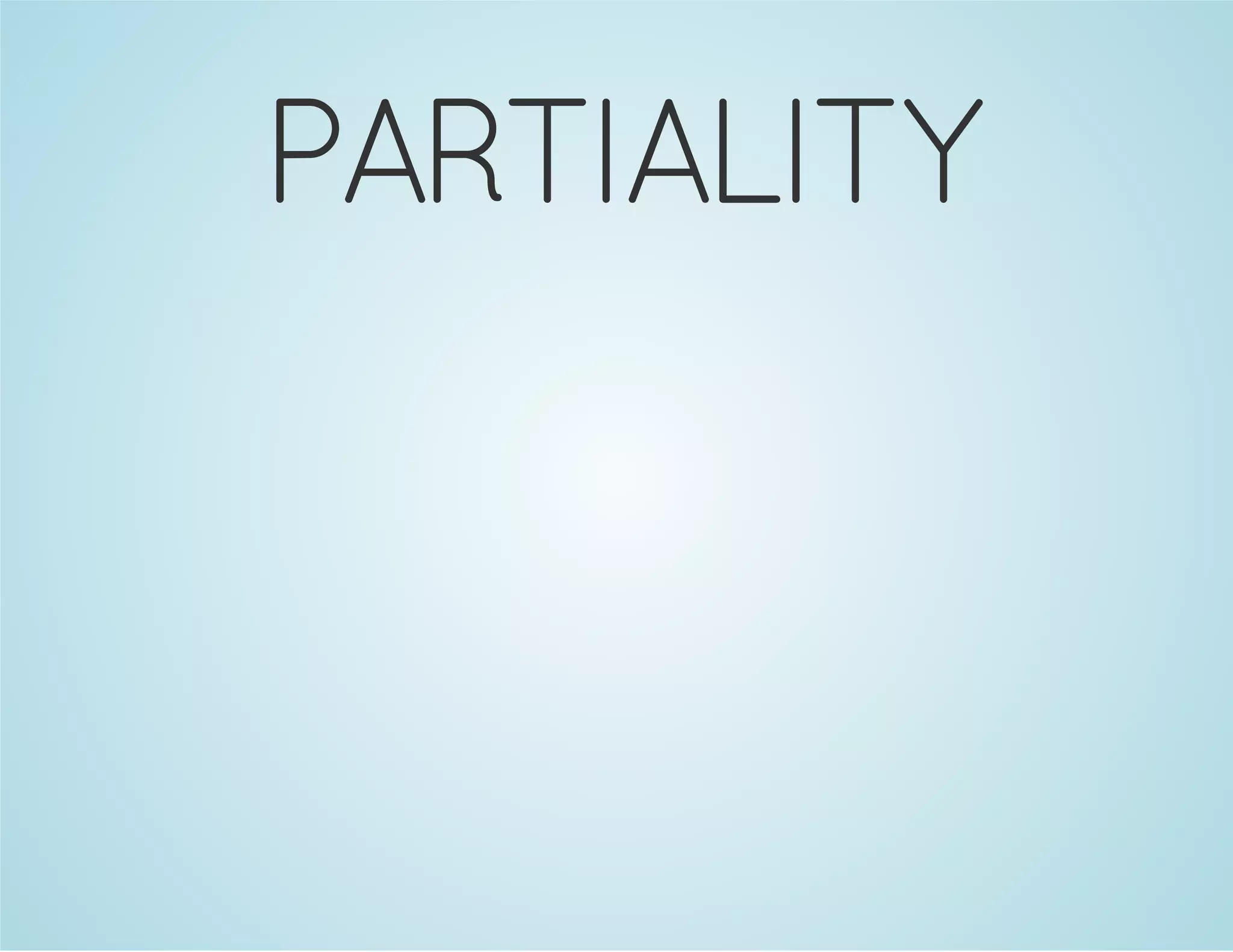
![It starts off so innocently:
head' :: [a] -> a
head' (x : _) = x
head' [] = undefined
tail' :: [a] -> [a]
tail' (_ : xs) = xs
tail' [] = undefined](https://image.slidesharecdn.com/refinedtypes-140929232820-phpapp01/75/Refined-types-FP-Syd-3-2048.jpg)


![First we learn about Maybe, adulterate the type to add a rug
to sweep the unwanted kernel under.
head' :: [a] -> Maybe a
head' (x : _) = Just x
head' [] = Nothing
tail' :: [a] -> Maybe [a]
tail' (_ : xs) = Just xs
tail' [] = Nothing](https://image.slidesharecdn.com/refinedtypes-140929232820-phpapp01/75/Refined-types-FP-Syd-6-2048.jpg)
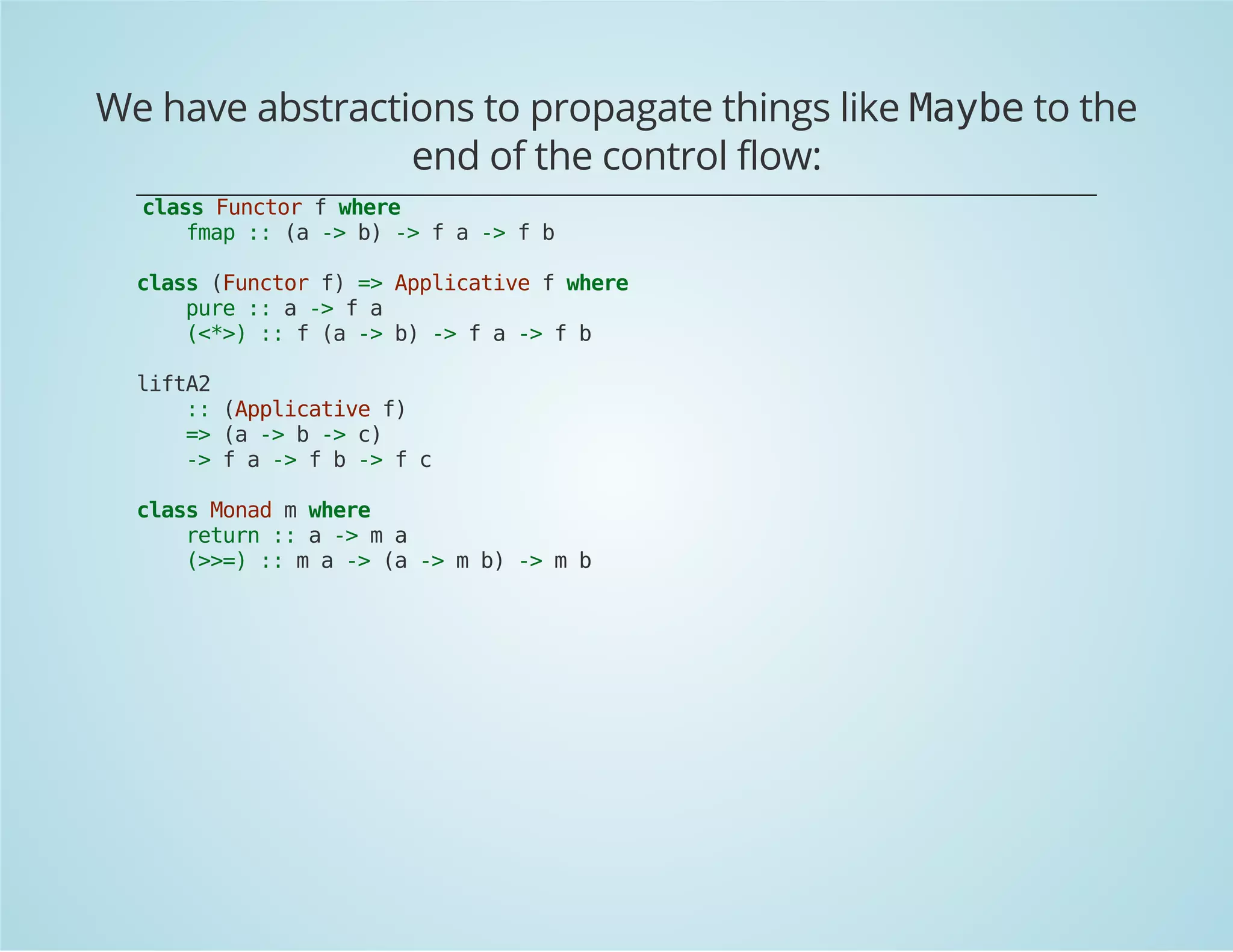
![But this is just a case of an unwanted pattern, rather than
adulterate the output type, we could refine the input type:
data NonEmpty a = a :| [a]
nonEmpty :: [a] -> Maybe (NonEmpty a)
nonEmpty (x : xs) = Just $ x :| xs
nonEmpty [] = Nothing
head' :: NonEmpty a -> a
head' (x :| _) = x
tail' :: NonEmpty a -> [a]
tail' (_ :| xs) = xs](https://image.slidesharecdn.com/refinedtypes-140929232820-phpapp01/75/Refined-types-FP-Syd-8-2048.jpg)
![FUNCTOR
And using the same machinery we can lift these simpler
total functions up to the more complicated types:
headl :: [a] -> Maybe a
headl = fmap head' . nonEmpty
taill :: [a] -> Maybe [a]
taill = fmap tail' . nonEmpty](https://image.slidesharecdn.com/refinedtypes-140929232820-phpapp01/75/Refined-types-FP-Syd-9-2048.jpg)
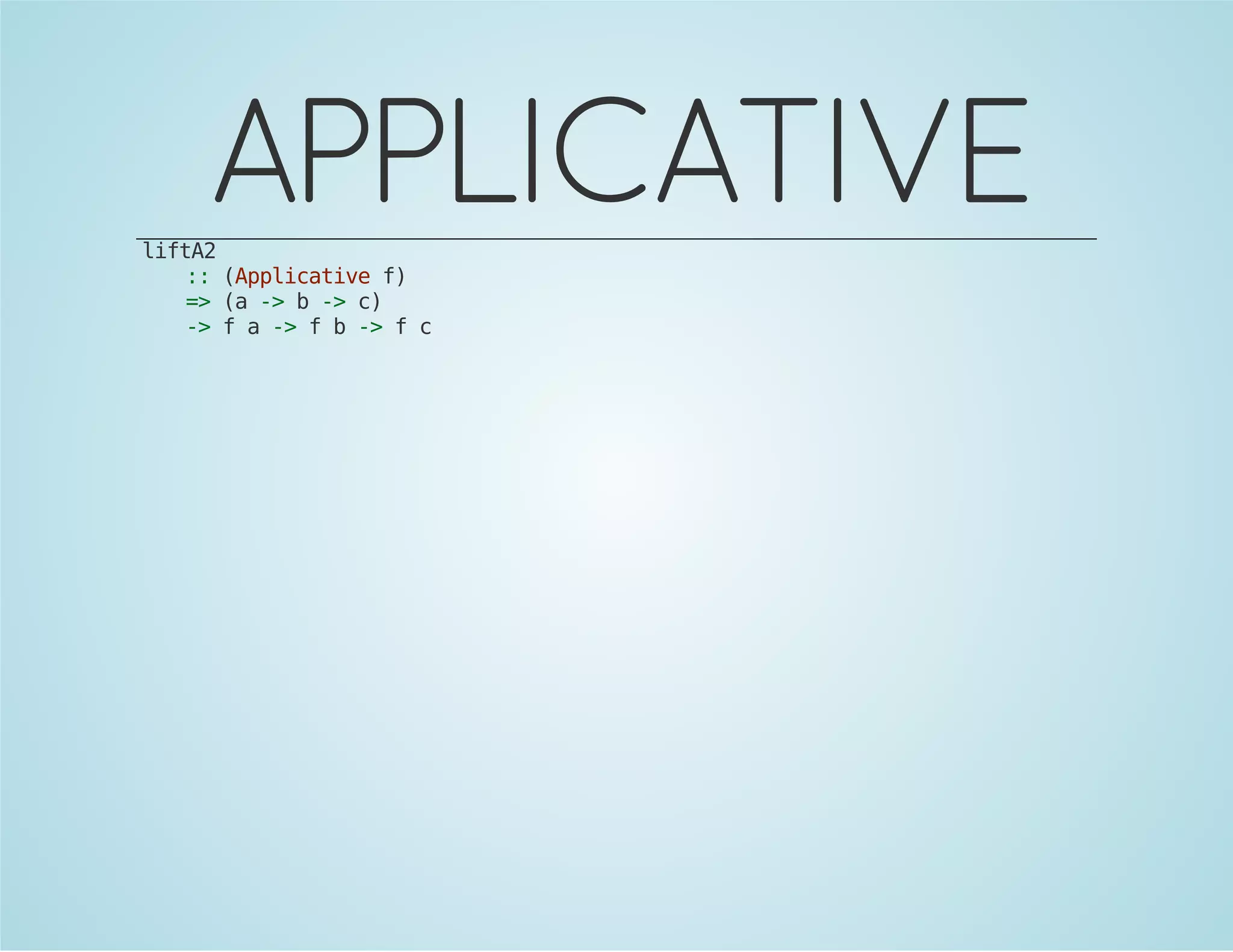

![LENS &
TRAVERSALS
fromList :: [a] -> Either [b] (NonEmpty a)
fromList = maybe (Left []) Right . nonEmpty
toList :: NonEmpty a -> [a]
toList (x :| xs) = x : xs
_NonEmpty :: Prism [a] [b] (NonEmpty a) (NonEmpty b)
_NonEmpty = prism toList fromList
dropTail :: NonEmpty a -> NonEmpty a
dropTail (x :| _) = x :| []
-- Provided you are happy with the "do nothing" response
-- for values in the kernel of fromList
over _NonEmpty
:: (NonEmpty a -> NonEmpty b)
-> [a] -> [b]](https://image.slidesharecdn.com/refinedtypes-140929232820-phpapp01/75/Refined-types-FP-Syd-12-2048.jpg)
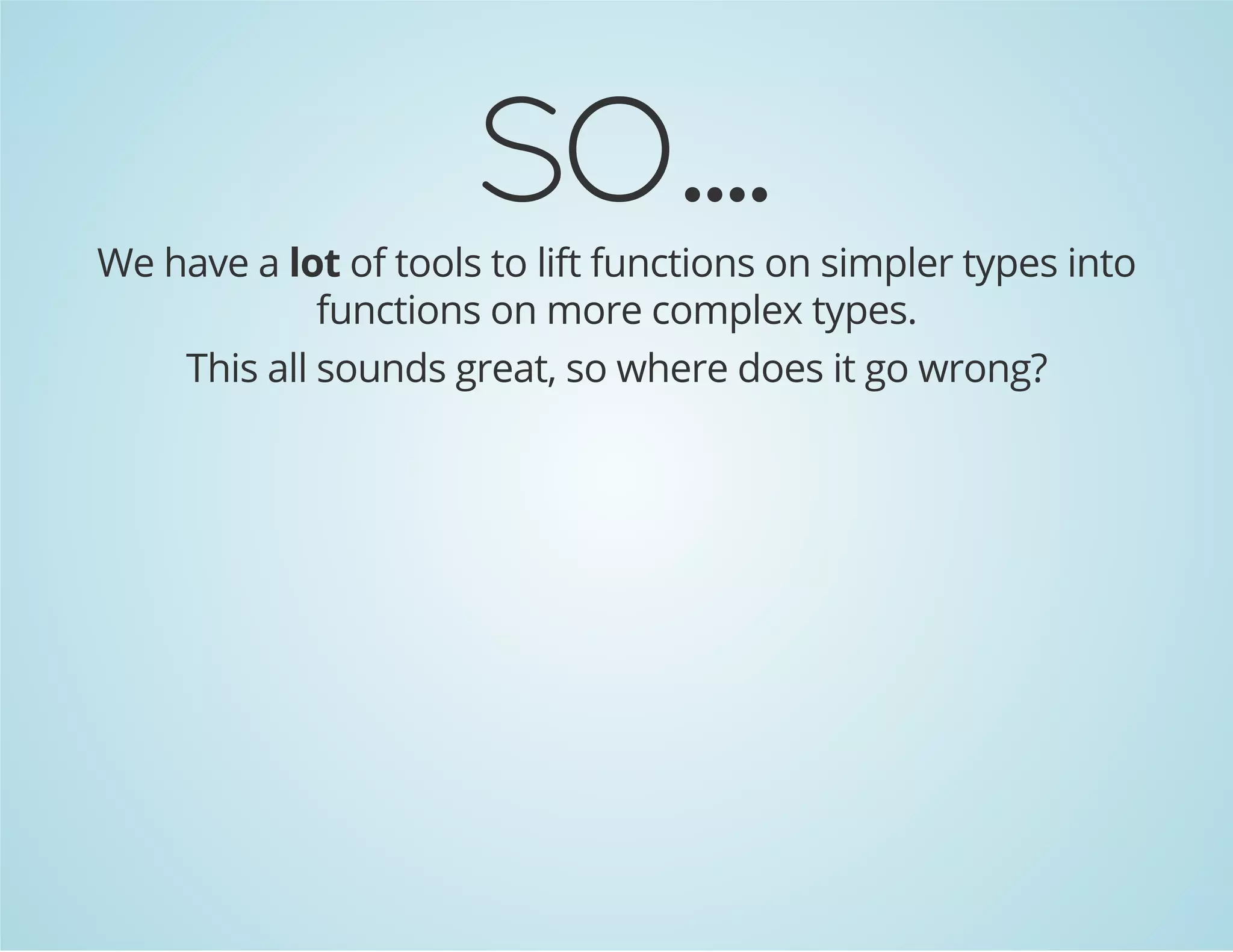

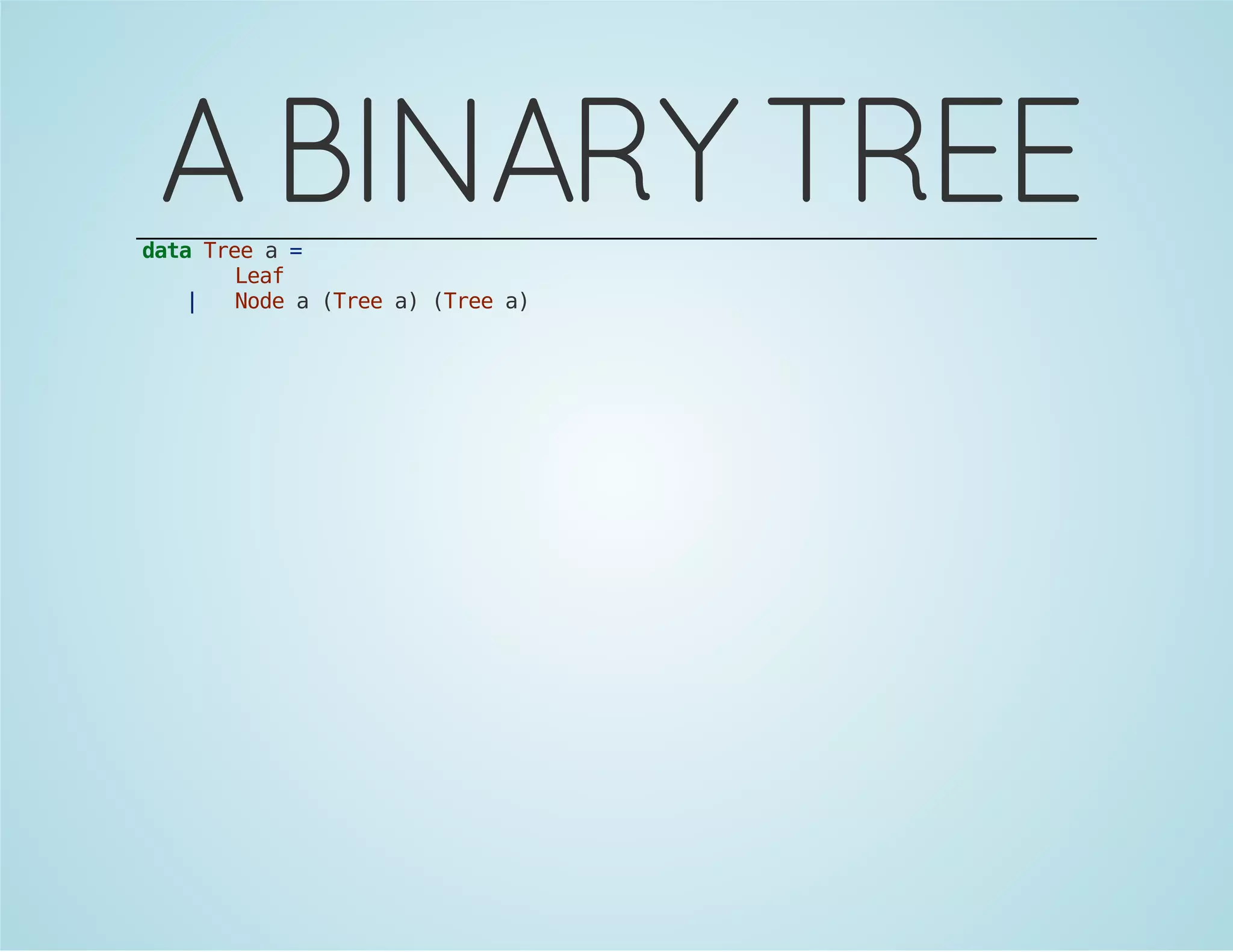
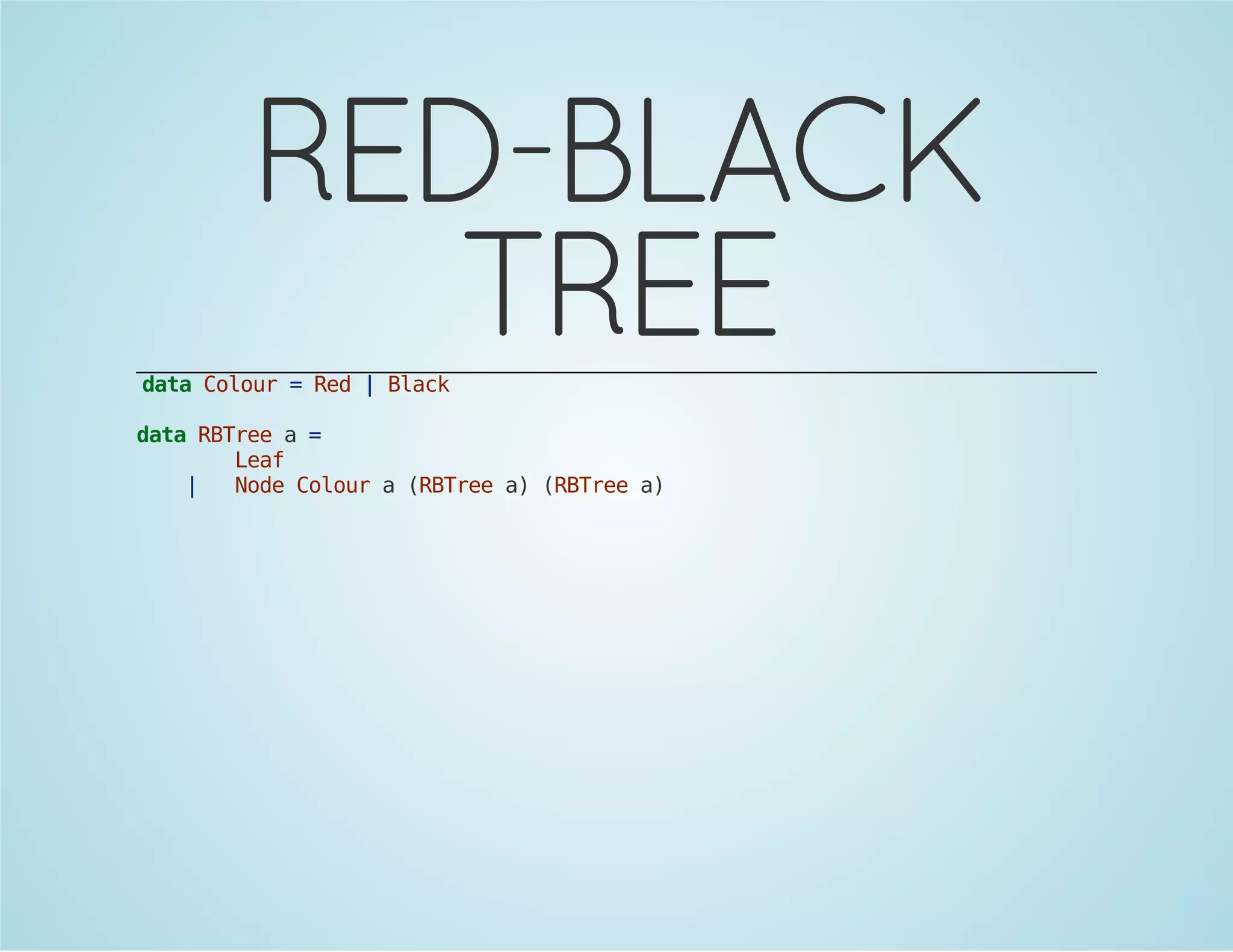
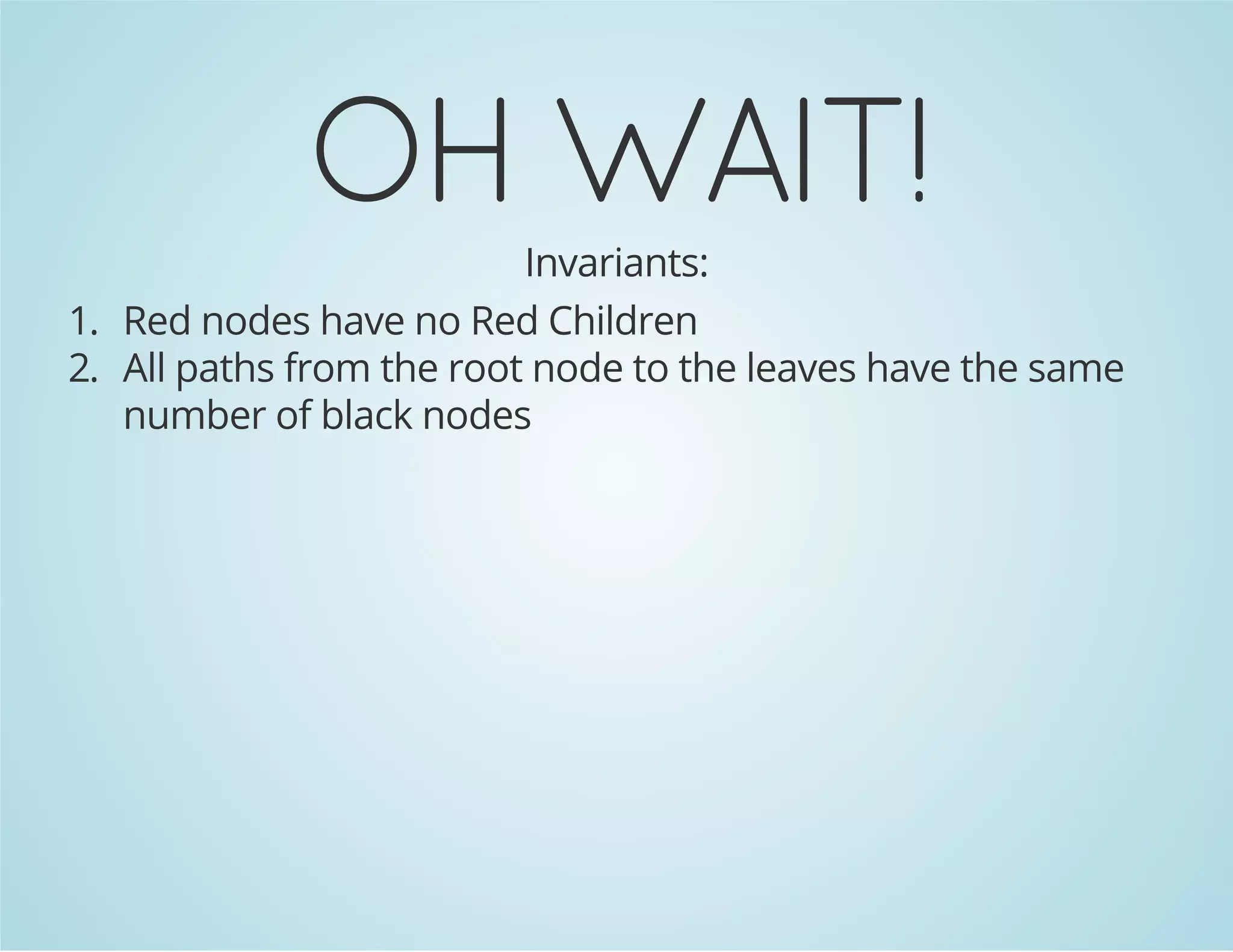
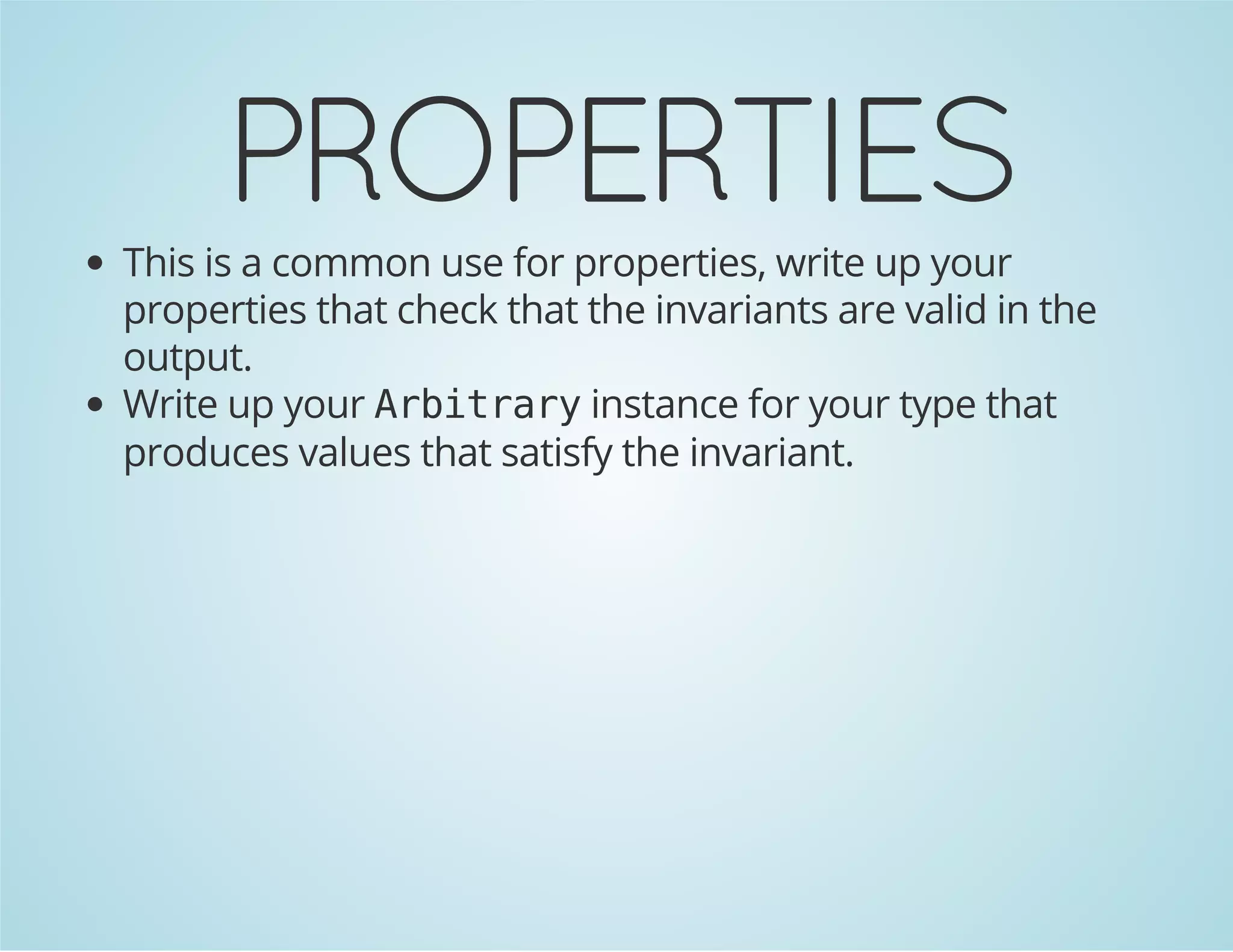
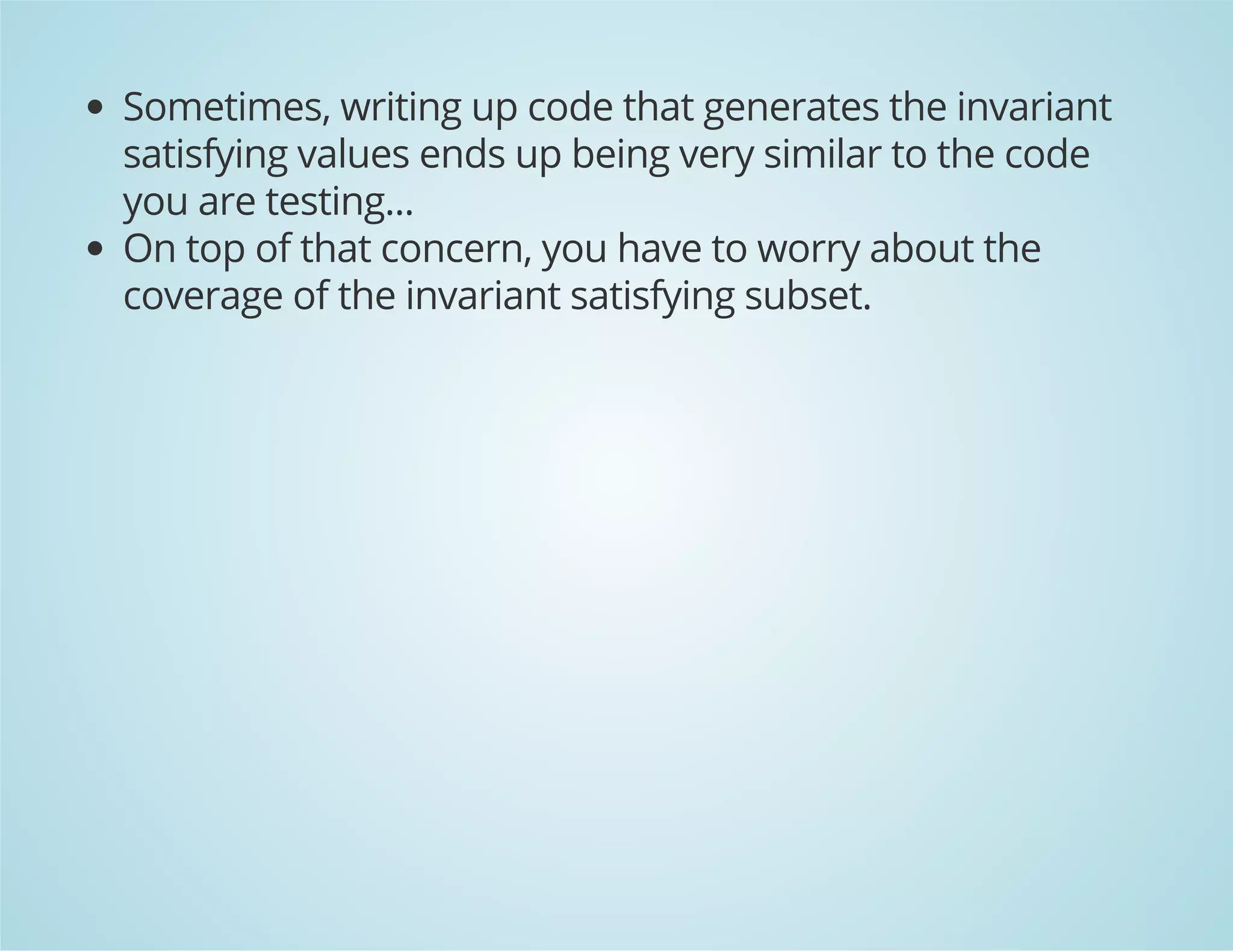

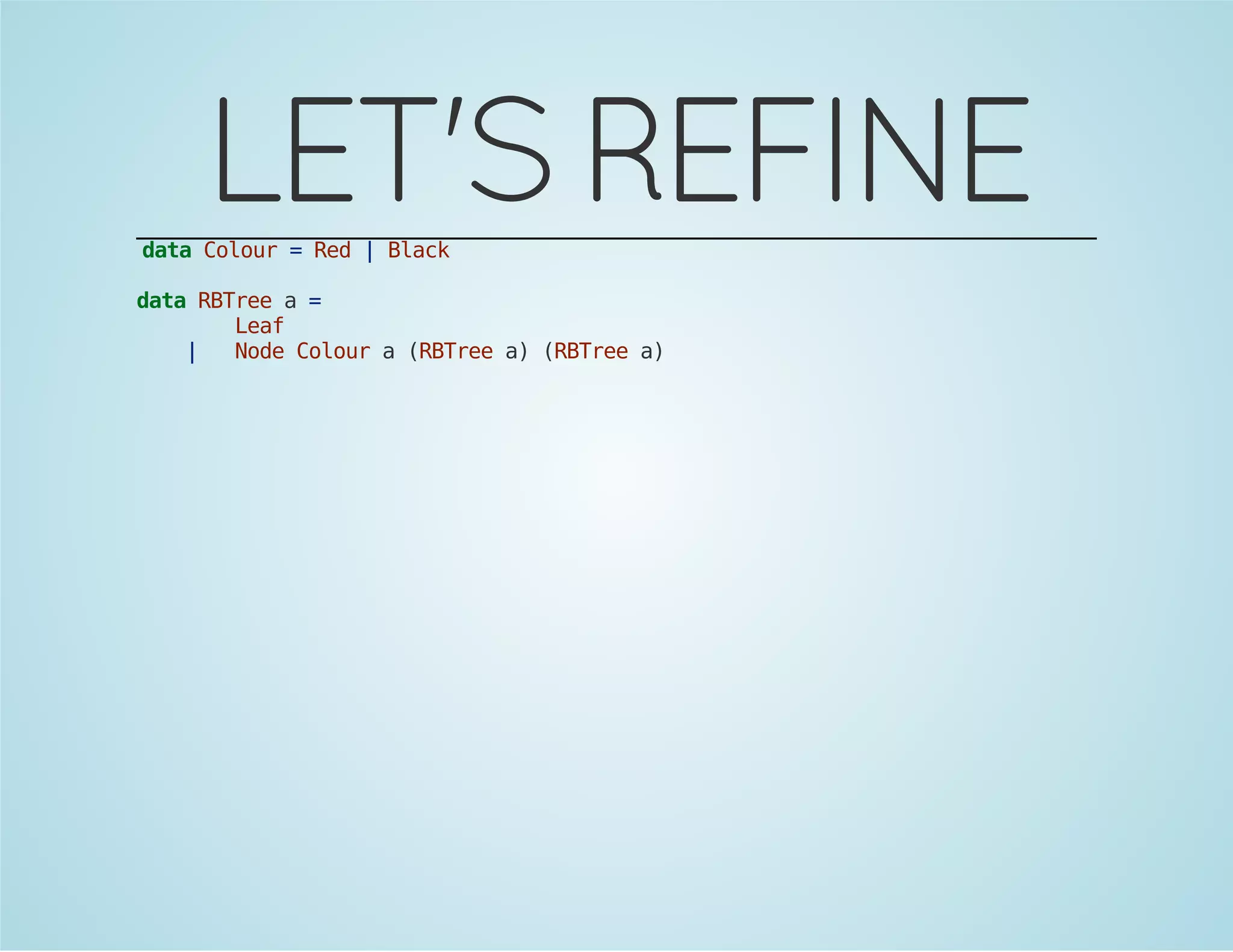
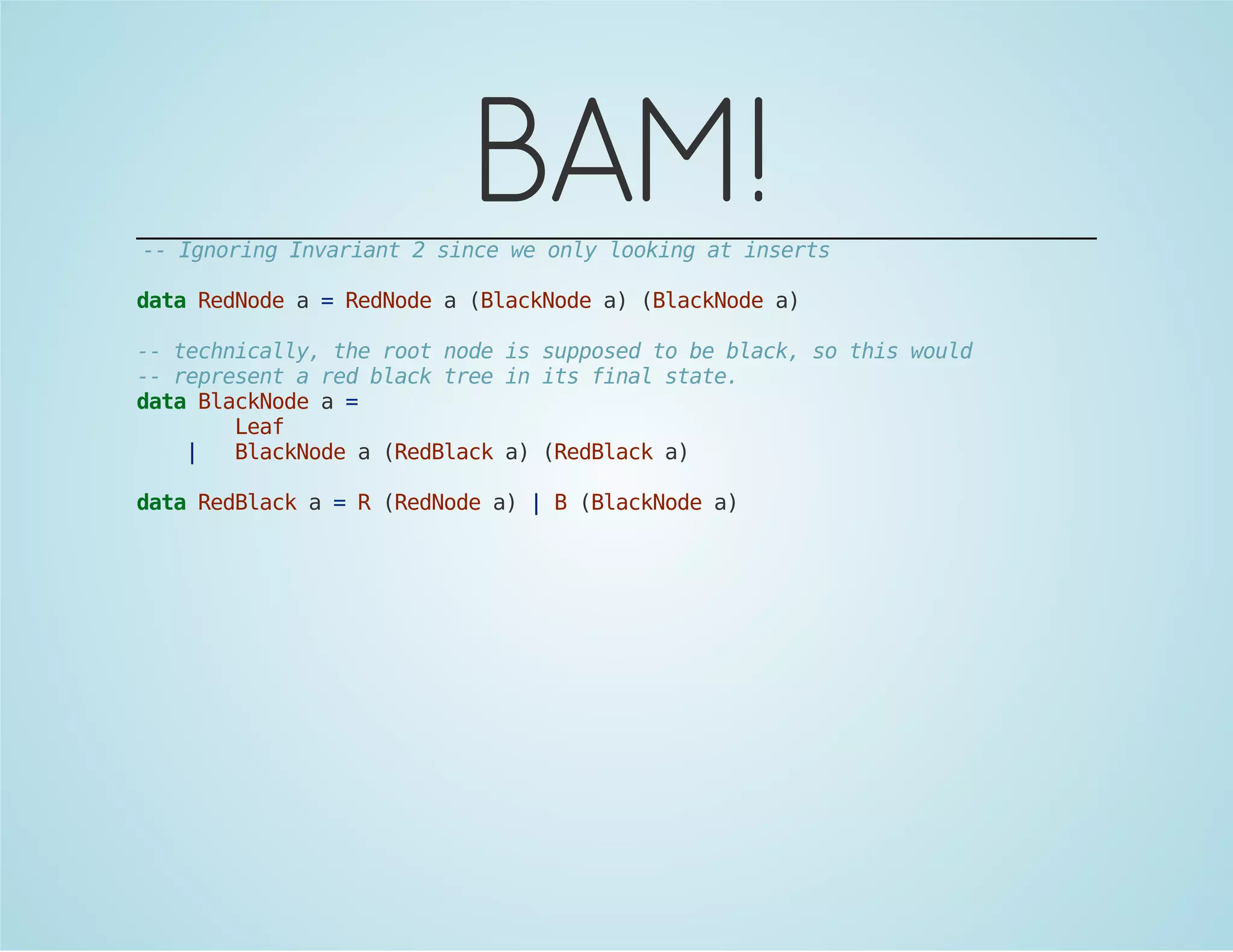
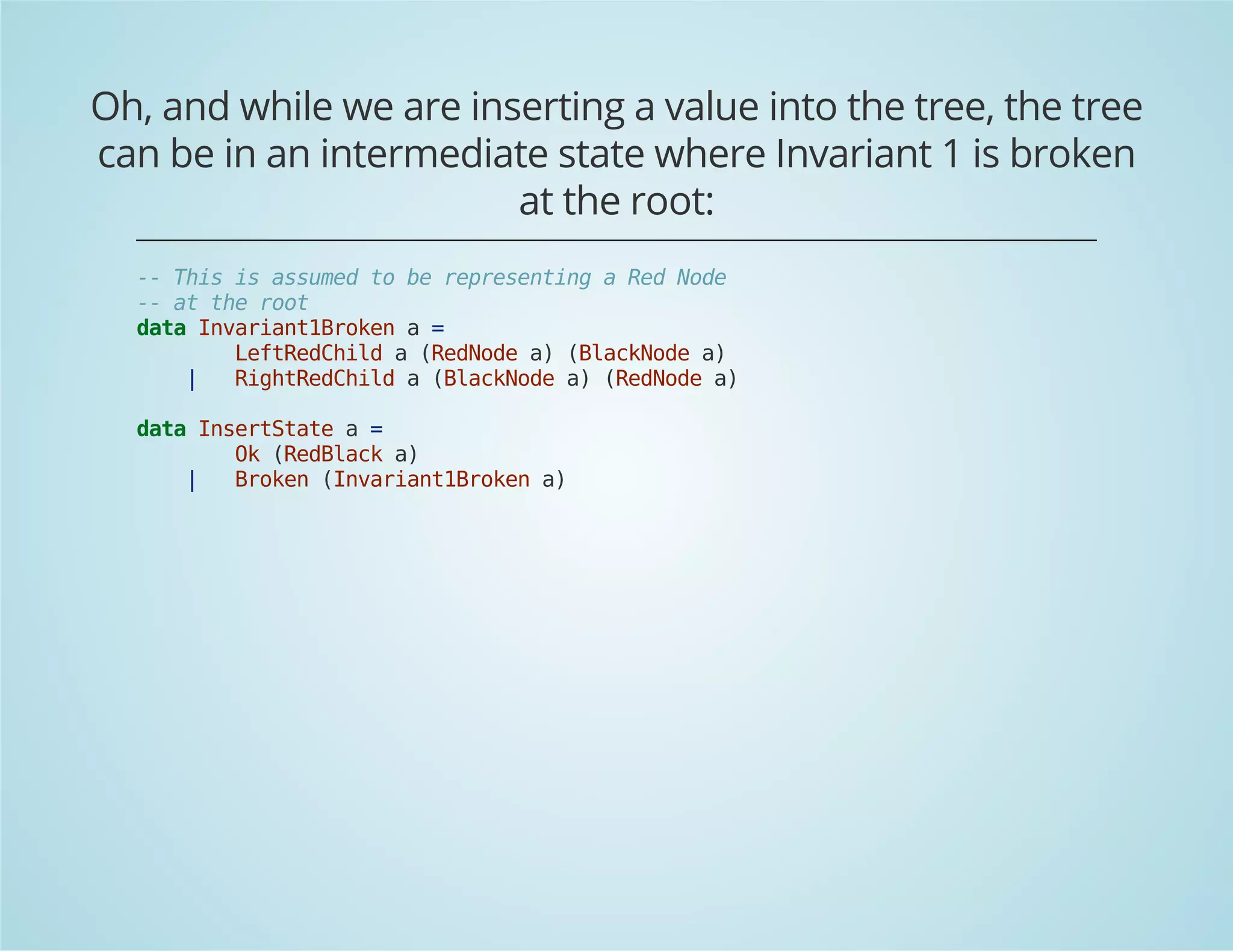
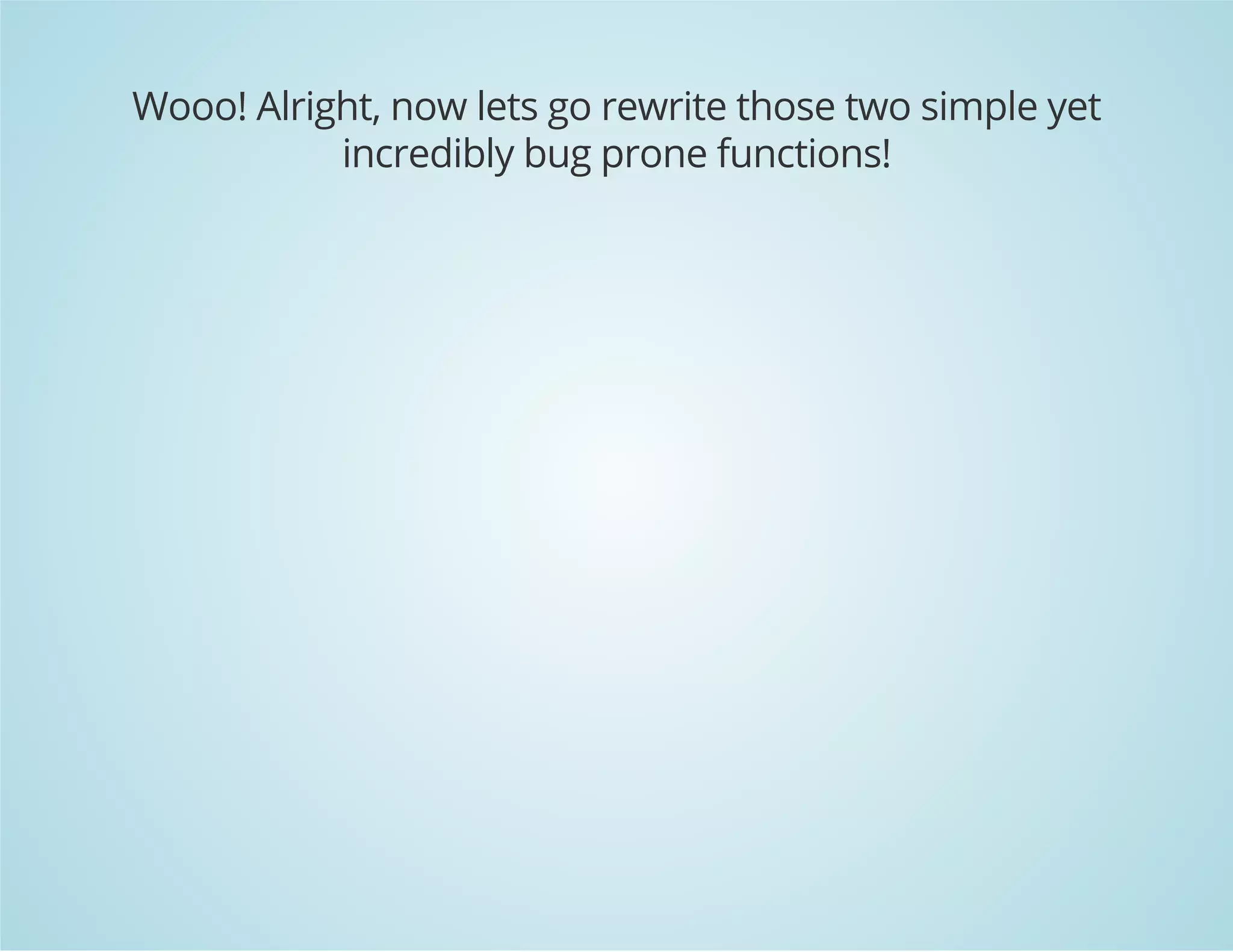
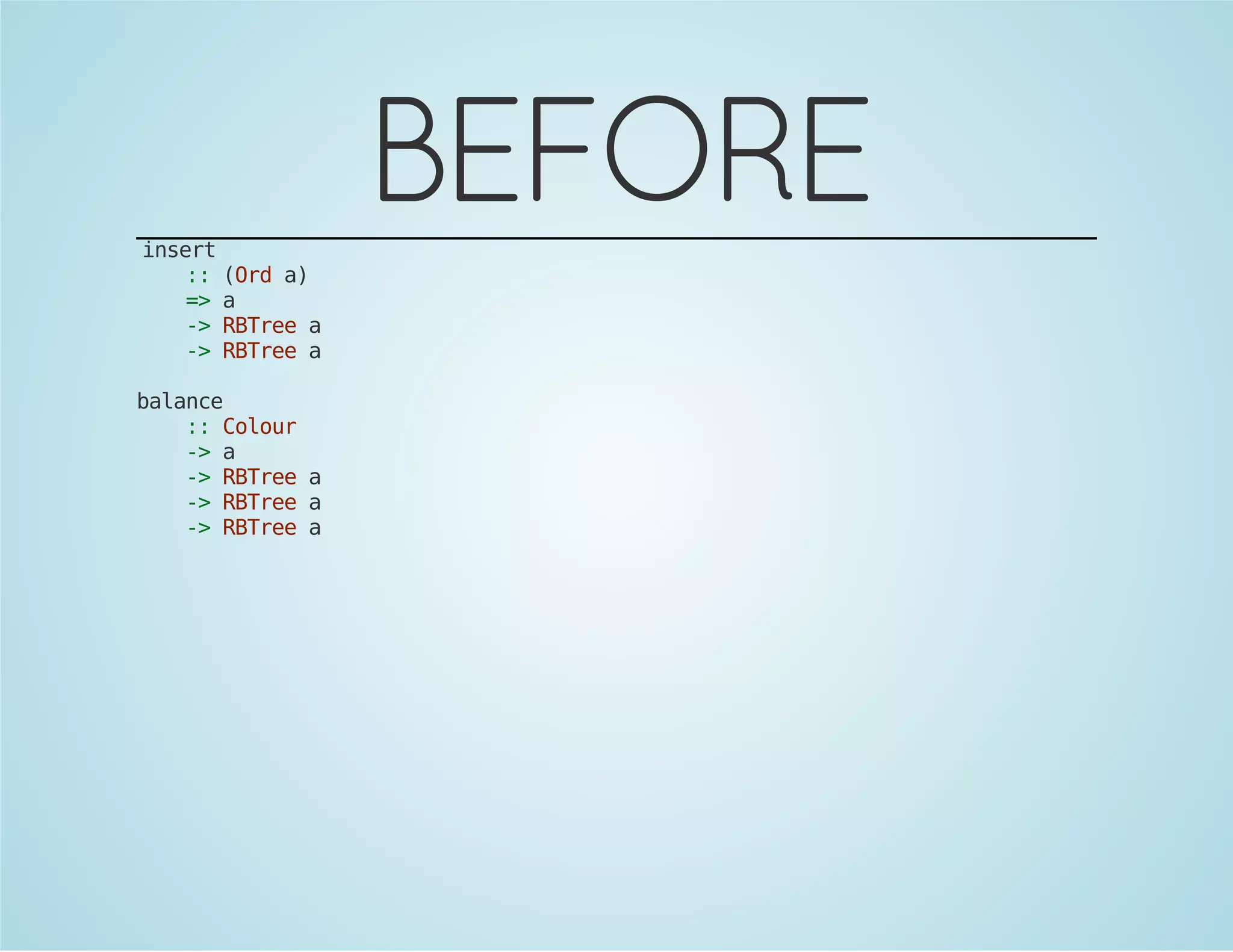

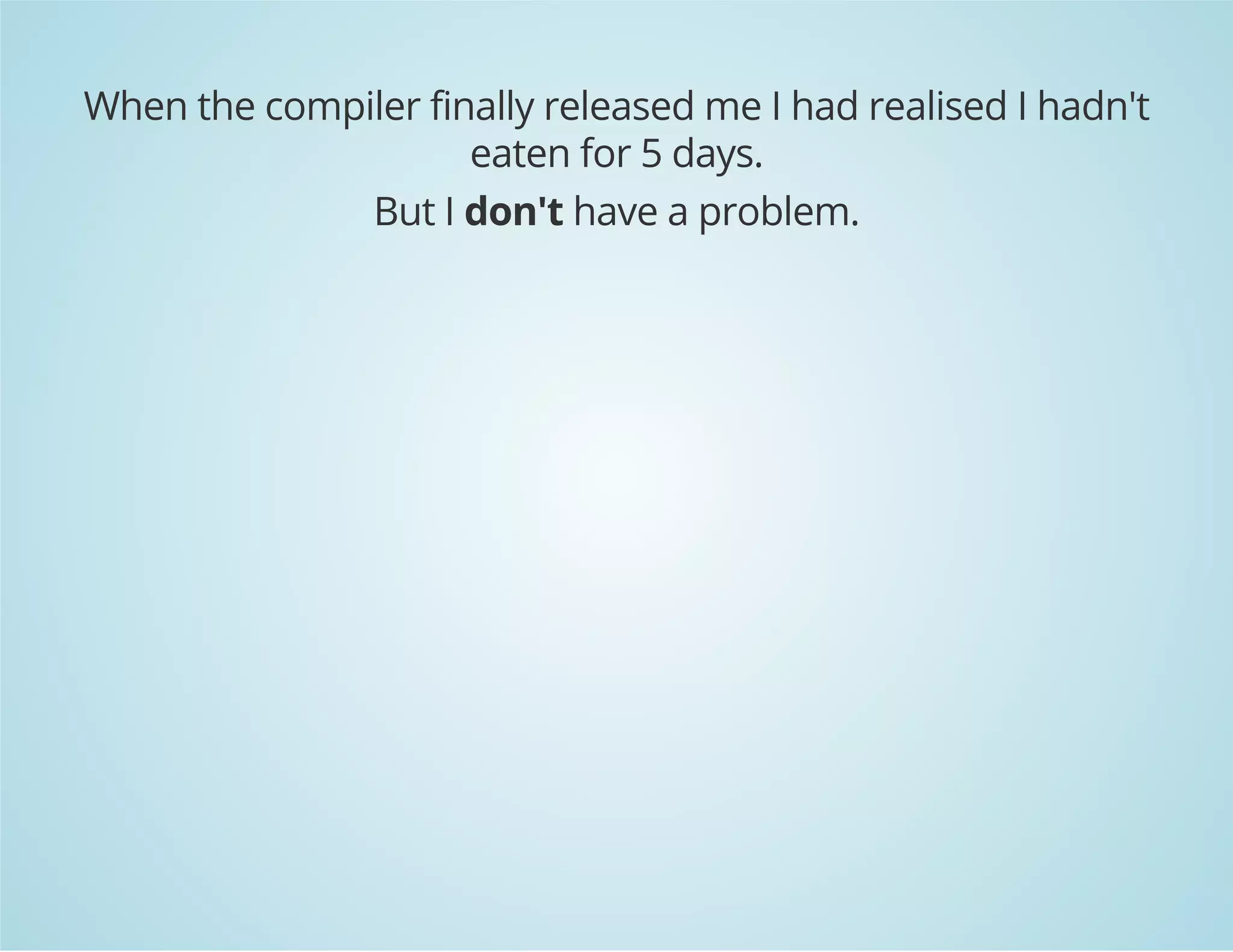
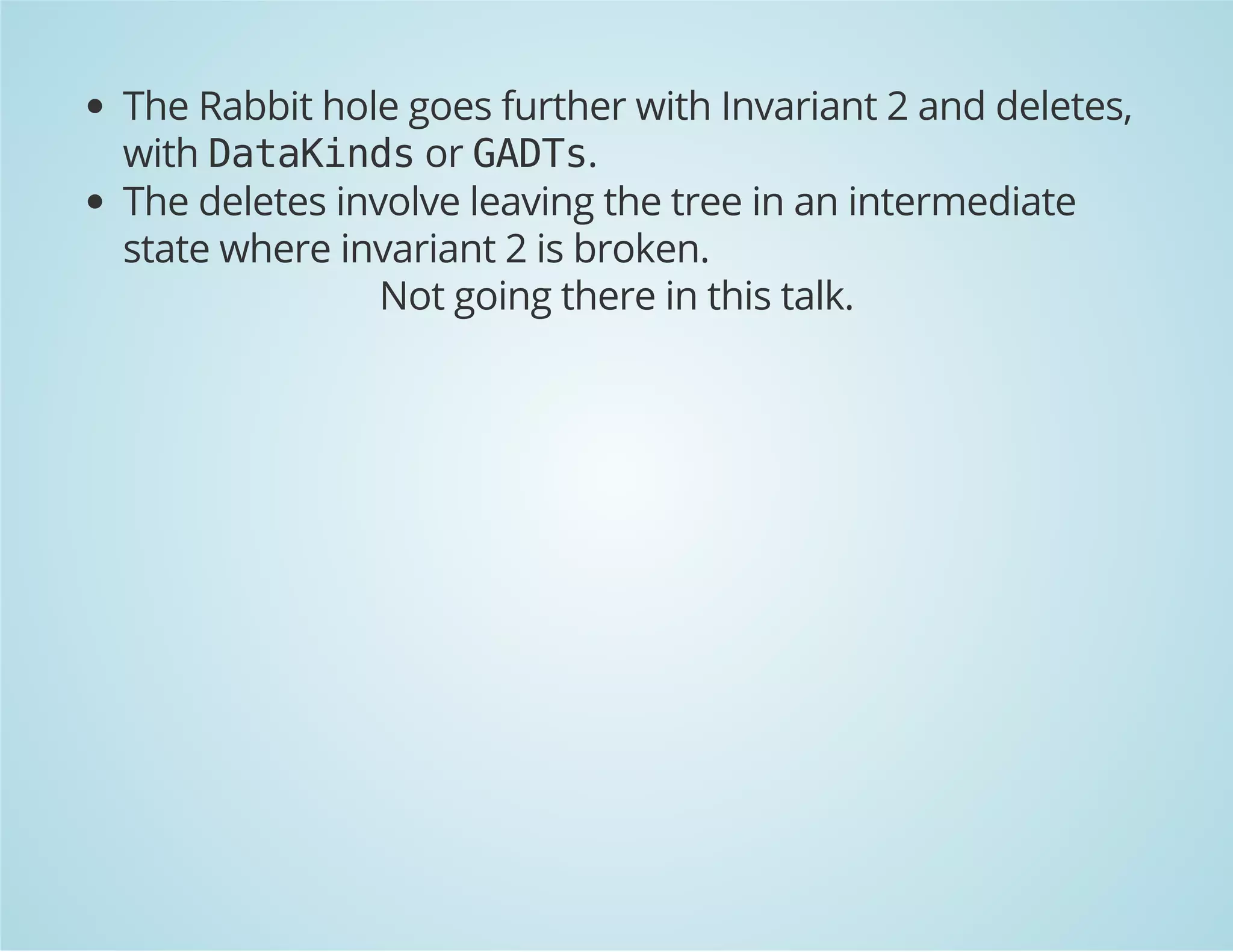

![So whats the problem here?
What's the difference between the [a] / NonEmpty a case?](https://image.slidesharecdn.com/refinedtypes-140929232820-phpapp01/75/Refined-types-FP-Syd-30-2048.jpg)
![All of the types could be injected into RBTree a much like
NonEmpty a can be injected into [a].
But theres a conceivable use for [a], values exist.
Other than implementing the core operations, users of
the of the data structure should never encounter values
that break the invariants.](https://image.slidesharecdn.com/refinedtypes-140929232820-phpapp01/75/Refined-types-FP-Syd-31-2048.jpg)
![REFINING TYPES
So far when I "refined" a type, I had to write up a
completely new distinct type.
Conversions between all these different types can be
potentially inefficient.
To "refine" [a], had to throw away the [] and build
NonEmpty a from a again.](https://image.slidesharecdn.com/refinedtypes-140929232820-phpapp01/75/Refined-types-FP-Syd-32-2048.jpg)


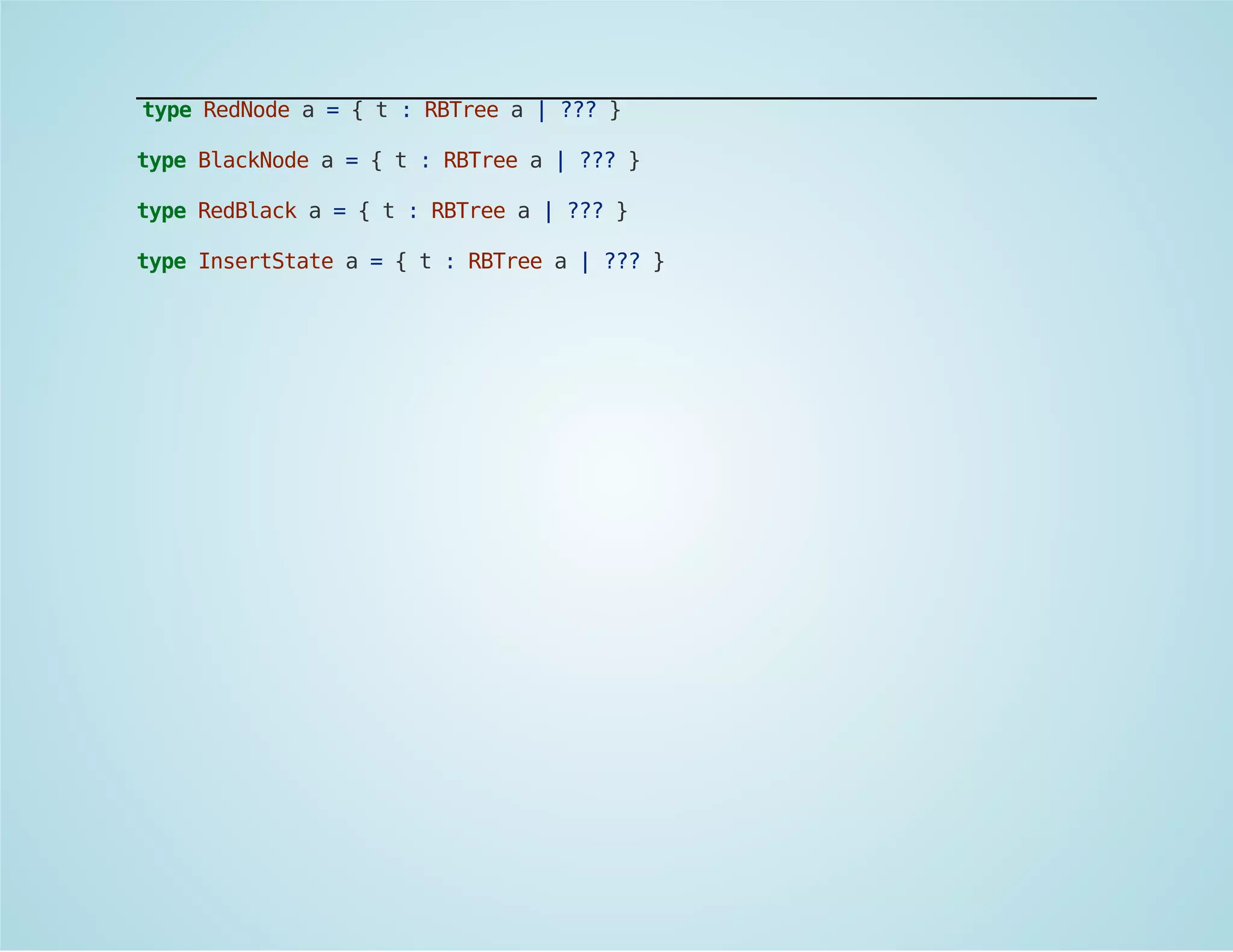




![BINOMIAL
TREES
A primitive from which Binomial heaps are built:
data BinomialTree a = BinomialTree a [a]
Defined inductively as follows:
Binomial tree of Rank 0 is a singleton node.
A binomial tree of rank r + 1 is formed by linking two
binomial trees of rank r, with one becoming a child of the
other.](https://image.slidesharecdn.com/refinedtypes-140929232820-phpapp01/75/Refined-types-FP-Syd-40-2048.jpg)
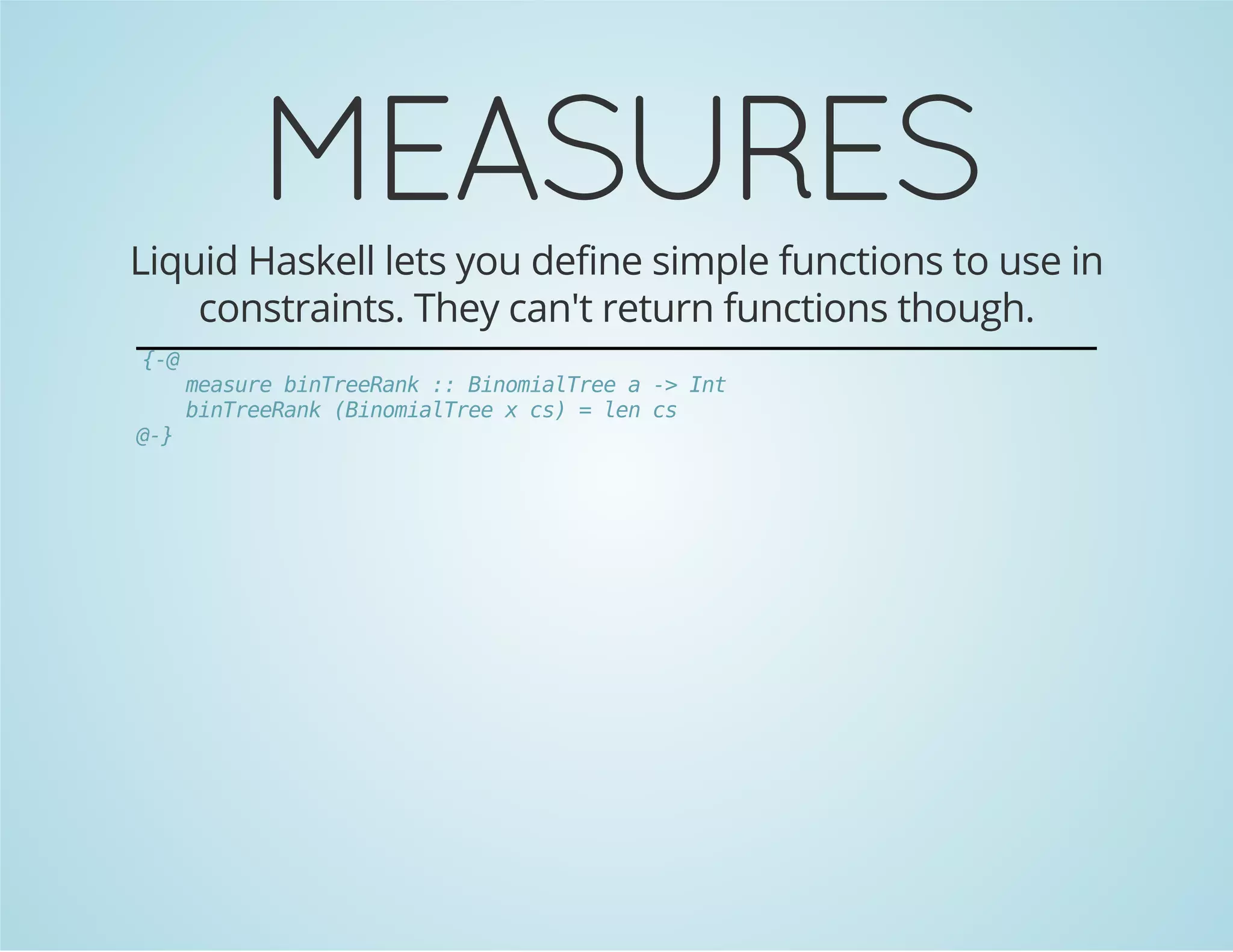
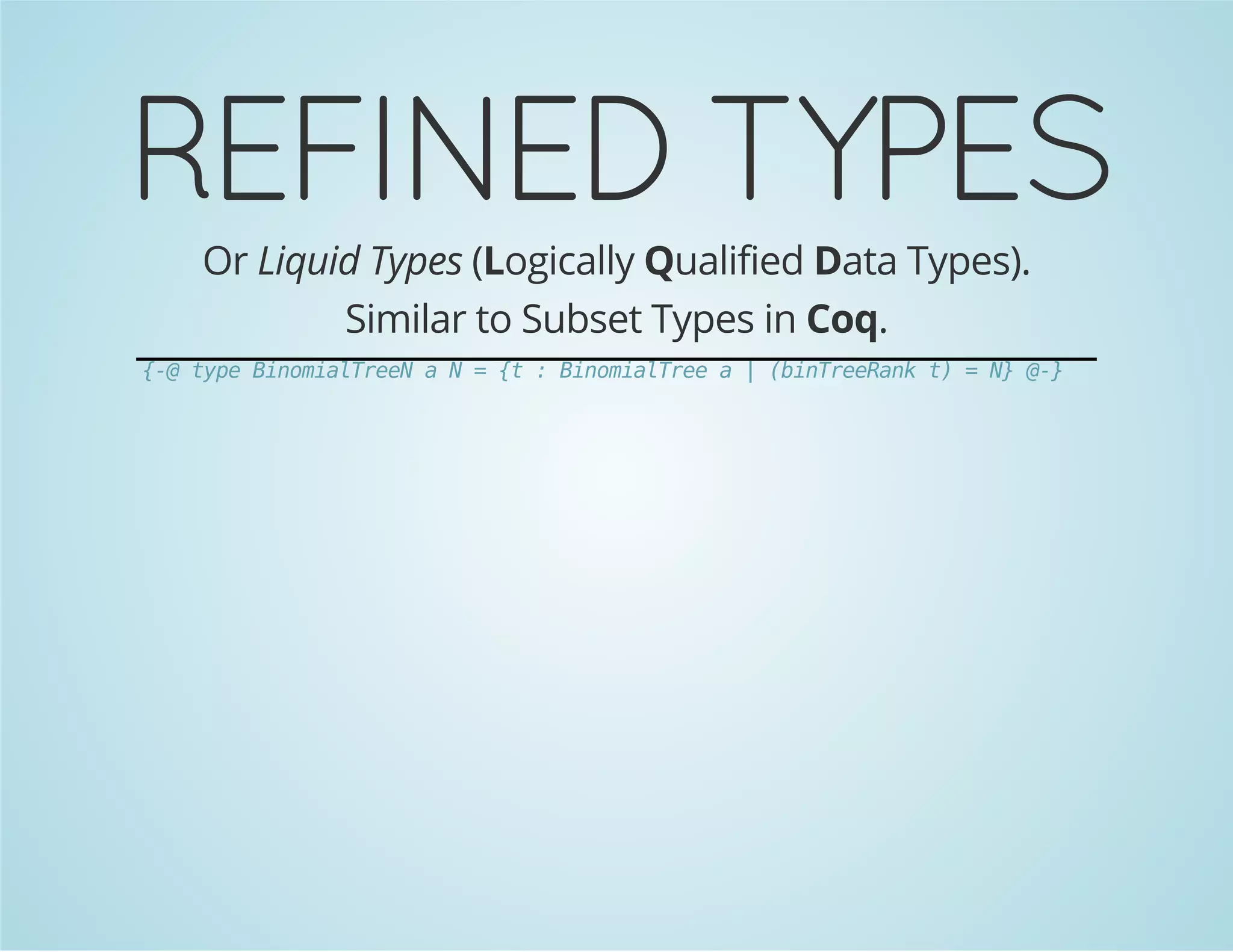
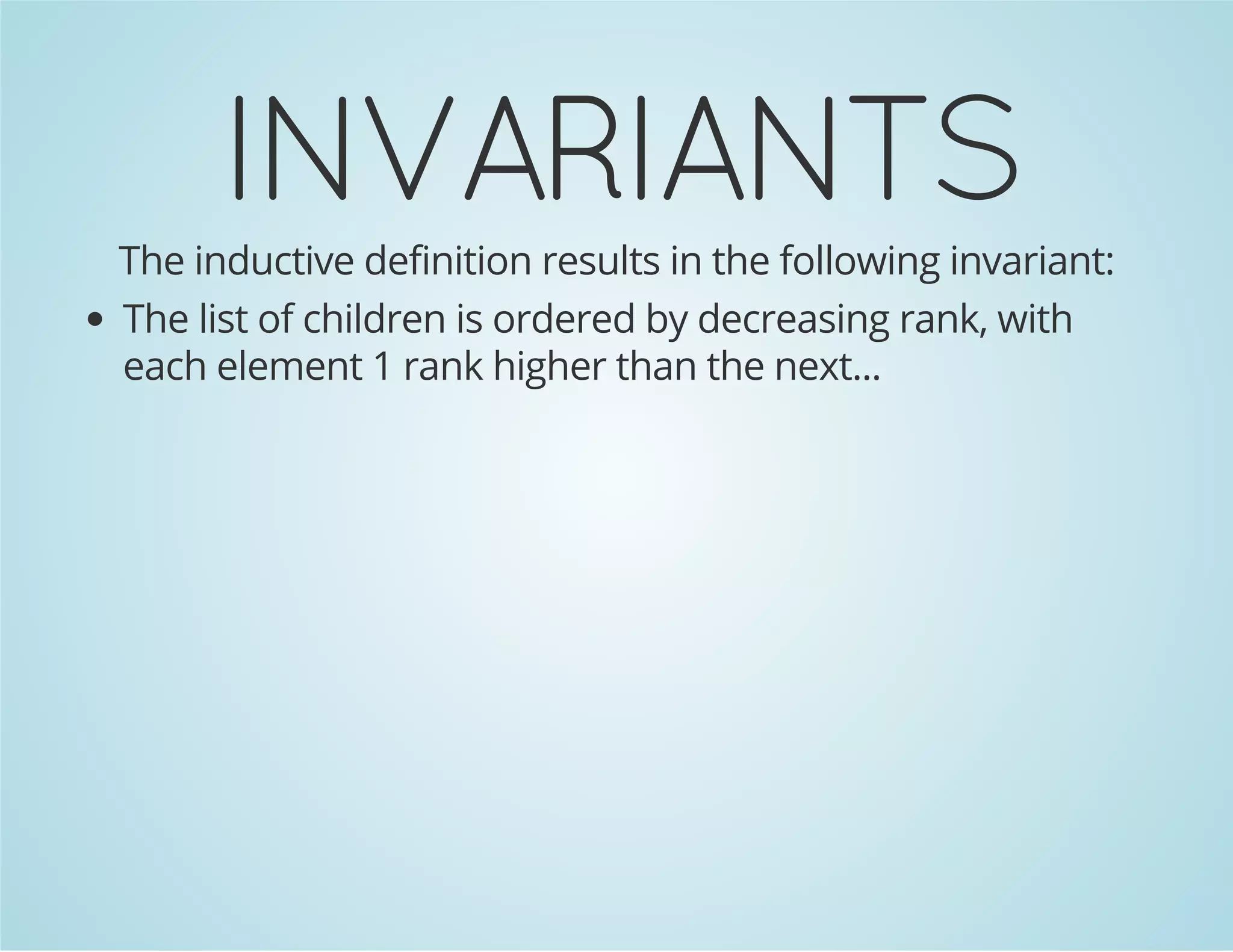
![Encode invariants into the type:
data BinomialTreeList a =
Nil
| Cons (BinomialTreeList a) (BinomialTree a)
{-@
measure listlen :: BinomialTreeList a -> Int
listlen (Nil) = 0
listlen (Cons xs x) = 1 + (listlen xs)
@-}
{-@ invariant {v : BinomialTreeList a | (listlen v) >= 0} @-}
{-@
type BinomialTreeListN a N = {ts : BinomialTreeList a | (listlen ts) = N}
@-}
-- Invariant here
{-@
data BinomialTreeList [listlen] a =
Nil
| Cons (ts :: BinomialTreeList a)
(t :: BinomialTreeListN a {(listlen ts)})
@-}](https://image.slidesharecdn.com/refinedtypes-140929232820-phpapp01/75/Refined-types-FP-Syd-44-2048.jpg)
